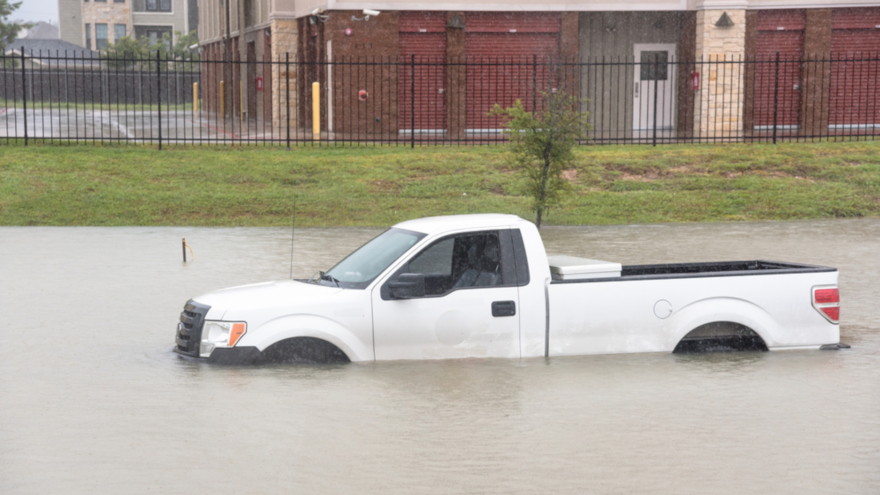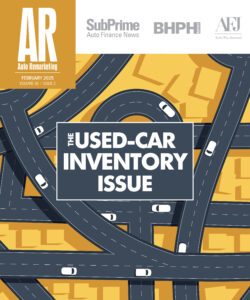Rust, must and other flood car considerations

Century Motors of South Florida owner Frank Fuzy has bought about 30,000 cars during his 30 years in business.
He said he has never bought a flood car.
Fuzy says he has never bought a car that was later discovered to have flood damage because, as he says, “You’ve just got to be educated.”
“If you see rusty seat tracks, or you have a foul odor or exceptionally dirty interiors, you’re going to run away,” said Fuzy, who is also a former president of the National Independent Automobile Dealers Association.
Alliance Inspection Management, a company that conducts more than 12 million annual vehicle condition reports, shares Fuzy’s views on being educated about flooded vehicles.
“Cars aren’t made to work in water,” said AiM chief executive officer Eric Widmer. “So, water that gets into certain components of cars, potentially they’re going to have issues down the line.”
In addition to discussing the consumer impacts of flood-damaged vehicles, Widmer also discussed areas of focus for dealerships when they purchase used vehicles or receive vehicles from a trade-in.
That discussion shows that dealerships should look at the same areas that members of the public must focus on in the area of flooding when purchasing a used vehicle.
All of this is especially important in the aftermath of recent flooding in the Midwest and Great Plains and the start of the Atlantic hurricane season.
What dealers don’t want: Unannounced damage
Dealers do not want to sell a car with damage that that is unannounced to them. At times, dealers acquire vehicles with substantial damage that has not been reported.
“So, you have to look at every individual car to determine what condition it’s in,” Widmer said. That’s what AiM does, he said, noting that it is an inspection company that works on behalf of captives, OEMs, banks, rental companies and dealers.
“We go out and create a virtual picture of a car that allows people to transact on it,” Widmer said.
He said that if an insurance claim is filed for flood damage on a vehicle, dealers will see that damage reported in different national databases.
But some vehicle owners only have collision insurance, and those owners probably won’t report flood damage. That’s where the problems can occur, Widmer said.
He said AiM provides its inspectors with training and tools available to identify damages, and included in that is flood-damage.
“So, there are some things that we have them look at that I think are critical for the cars that are going through the remarketing chain,” Widmer said.
Top 2 signs: Smell, rust
Widmer and Fuzy agree on the top two areas of concern for dealers looking to determine if a vehicle has flood damage: Smell and rust.
“If it has a musty smell, that’s a big indicator,” Widmer said.
“The second is to look for rust,” Widmer said. More specifically, it’s a red flag if you see rust where you shouldn’t see rust; corrosion where you shouldn’t see corrosion.
Where shouldn’t you see rust and corrosion? If you see that bolts underneath the seats are rusted, that’s something that needs a closer look, Widmer said.
“Rust anywhere inside a car, that’s not a normal condition,” he said.
“Pay real close attention to all the little indicators that are out there, whether it’s rust, whether it’s rusting in the wheels and brakes and stuff like that, that’s not normal,” Widmer said. “And if you see anything like that, it should raise suspicions and have you keep digging to make sure you understand the full condition of the car.”
Additional signs of a flood-damaged car, as listed in a flood damage resource guide on the newsroom website of CARFAX:
— Upholstery or carpeting that is loose, new, stained or doesn’t match
— Damp carpets
— Mud or silt in the glove compartment or under the seats
— Brittle wires under the dashboard
— Fog or moisture beads in the interior lights, exterior lights or instrument panel
Water impacts safety, electronics
Electronic components continue to play a bigger part in the operation of vehicles, and those components are expensive to fix.
That also brings up safety issues involving water and electronics and Widmer’s earlier statement that water and cars don’t mix.
When vehicle electronics are water-damaged, that can affect vehicle safety in areas such as airbag sensors and navigation, Widmer said. Contact with water could make the navigation system stop working. It could also affect components such as brake lines, he said.
“If it’s salt water flooding, that’s even more corrosive,” Widmer said.
As long as both parties know the actual condition of the car, a fair transaction is possible, Widmer said. “It’s when stuff gets discovered after the fact that all the problems arise.”
Vehicle history report: A valuable tool
A look at a vehicle history report before purchase can help prevent those problems. Experian’s AutoCheck product is one example, and Experian describes AutoCheck as “industrial strength vehicle history reporting.”
Experian’s senior product manager for AutoCheck Kirsten Von Busch says AutoCheck seeks to “provide auto professionals as much information as we can so they can trust that data and help them manage risk in their business and confidently buy and sell the right vehicles.”
Dealers need that confidence, especially for vehicles that might have been damaged in a flood area and then are moved to an area of the country where flooding is not top-of-mind for vehicle buyers, she said.
“So, that’s where the vehicle history report, having that detail of the title activity, the auction announcement information or other sources reporting flood or damage activity for the vehicle is really important,” Von Busch said. “Of course, we would always recommend every pre-owned vehicle have an inspection prior to purchase.
“But that may or may not be an option for an independent dealer, and at least they have that vehicle history to rely upon as they’re reviewing if they want to purchase a vehicle or not.”
That report could show water damage, which could affect electronics, and Fuzy of Century Motors of South Florida agrees with Widmer on the electronics issue.
“If a car goes under water, it’s not going to drive,” Fuzy said. “The computers in that car, if they get wet, and the transmission goes under, it’s going to quit shifting within a couple miles.”
More flood car data: By the numbers
CARFAX shared the below data on flood vehicles, showing that car segments make up the most flood vehicles on the road today. Also, Texas is the top flood car state.
Overall, there are roughly 408,000 flood cars on the road today, which is down from the 478,611 shown in 2018 data, a CARFAX spokesperson said via email.
Flooded vehicles by type:
Cars: 249,480
Light trucks: 60,705
Minivans: 14,102
SUVs: 83,993
Most flooded cars by state:
Texas 87,392
Florida 28,906
Kentucky 24,861
Pennsylvania 19,804
North Carolina 18,709
Illinois 15,647
New Jersey 12,557
Louisiana 11,489
California 11,349
New York 11,096

 View The Latest Edition
View The Latest Edition

